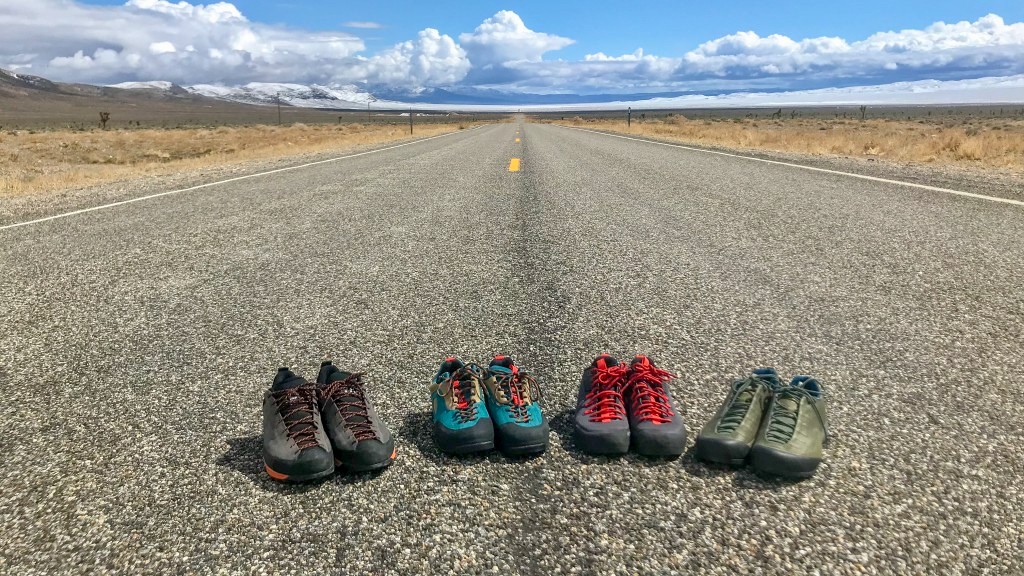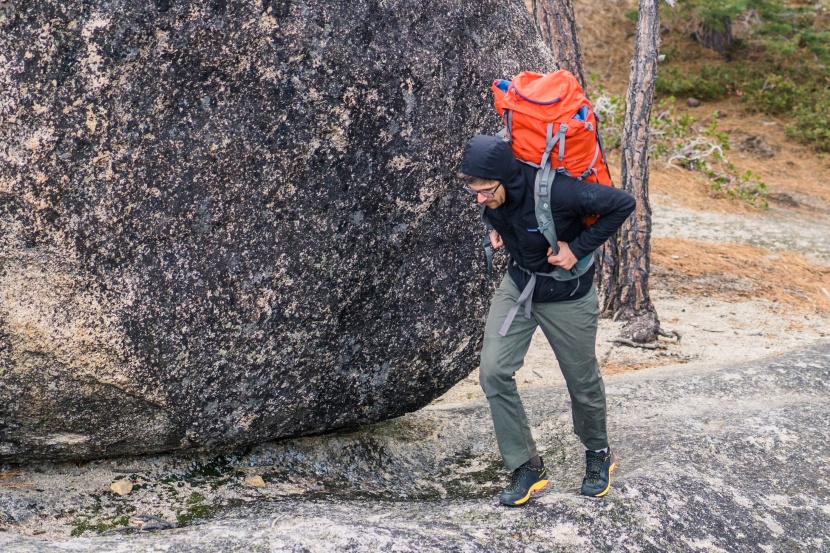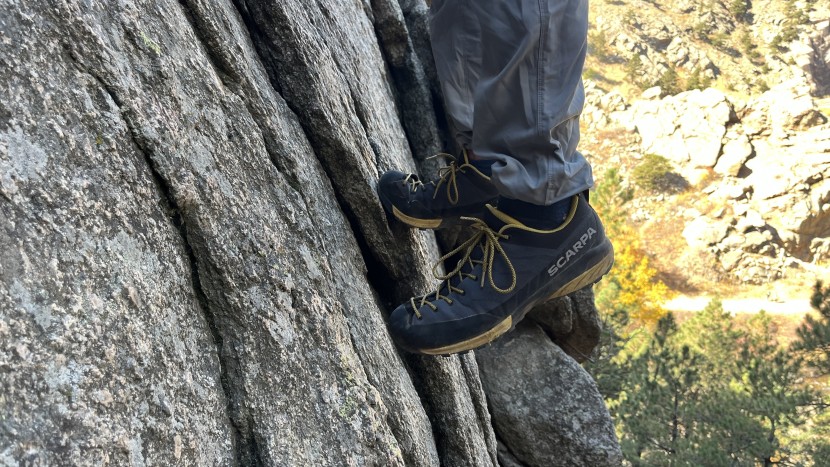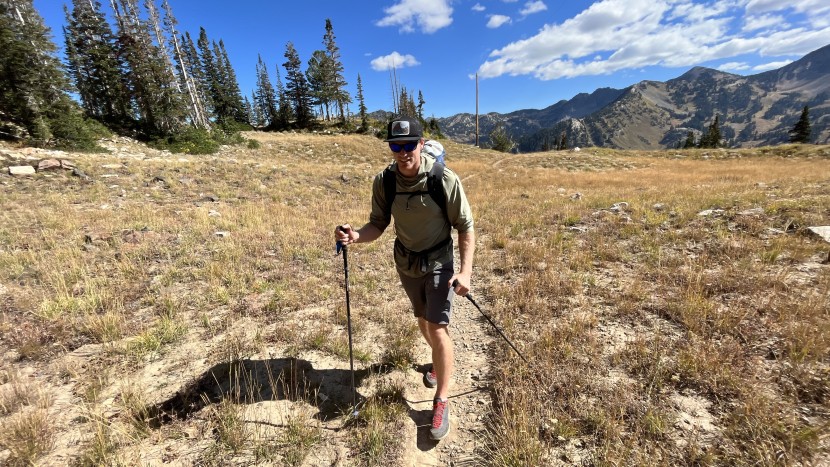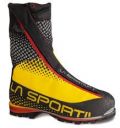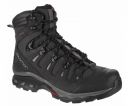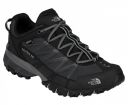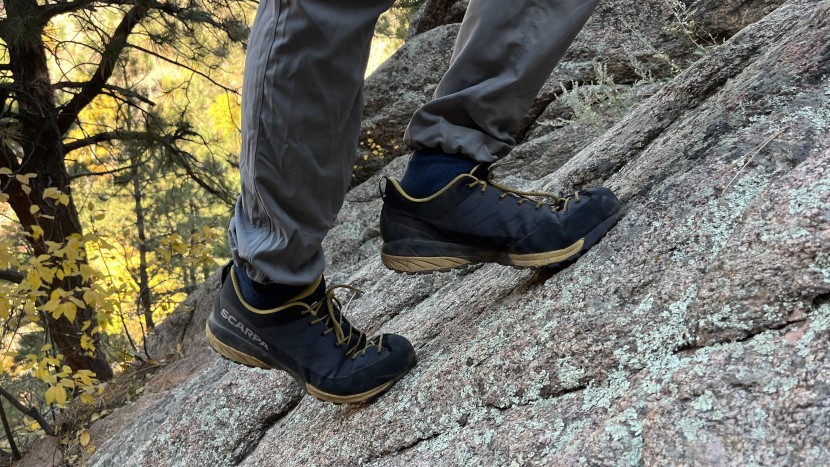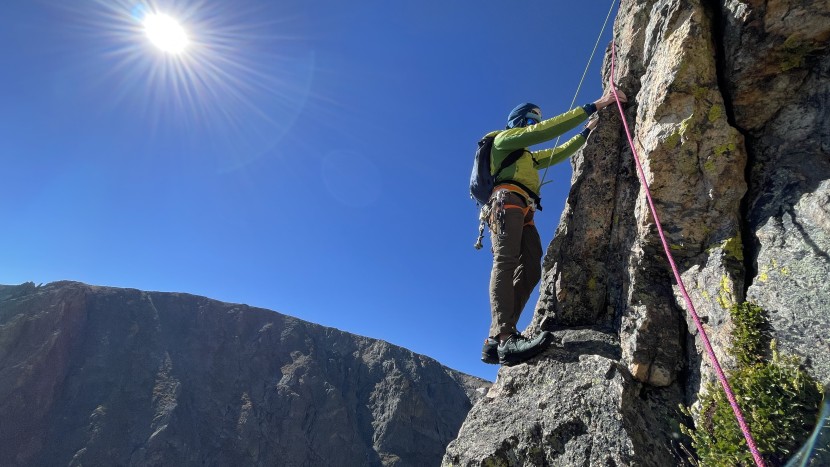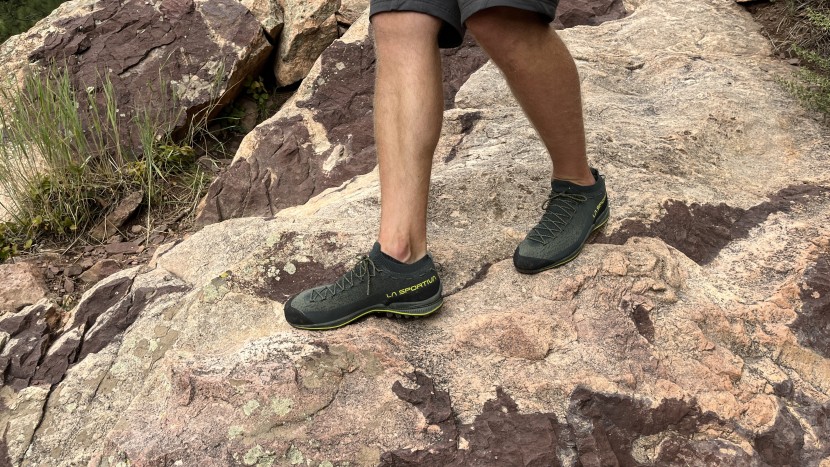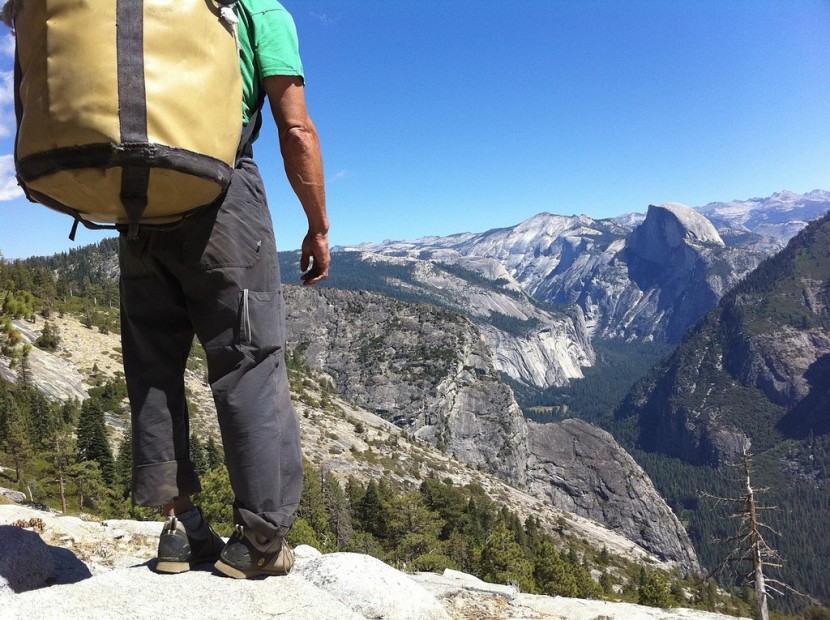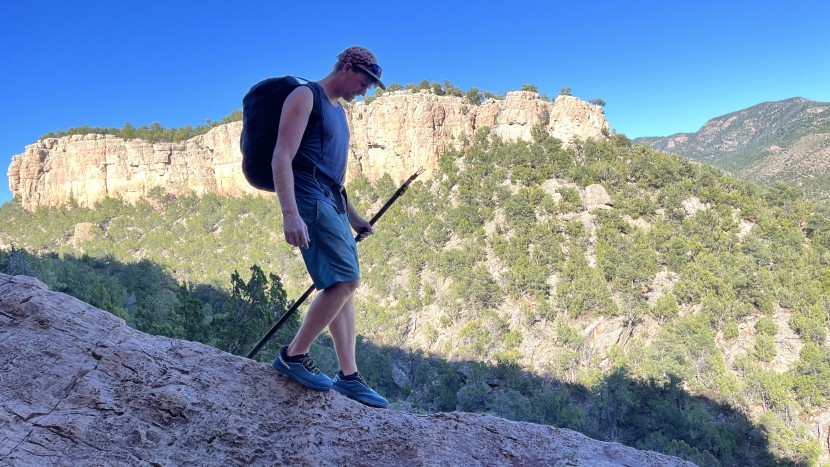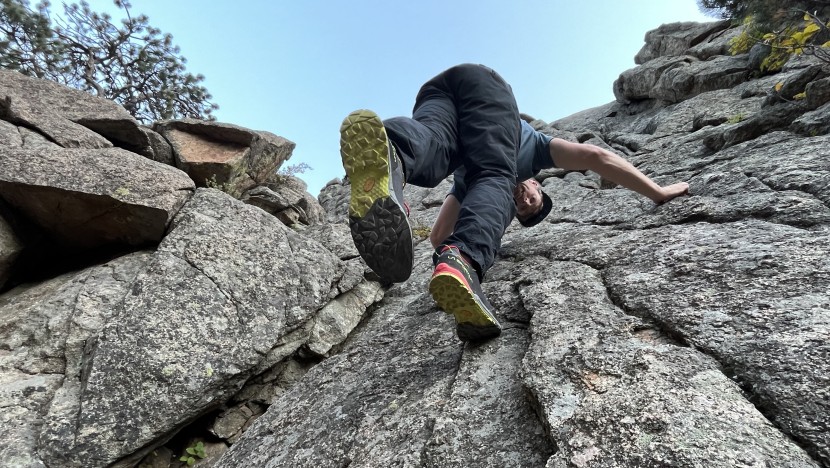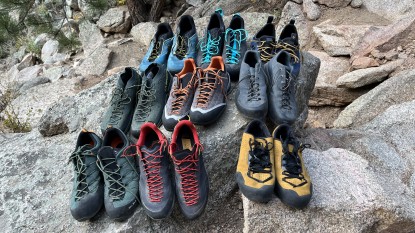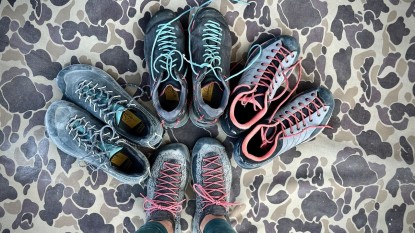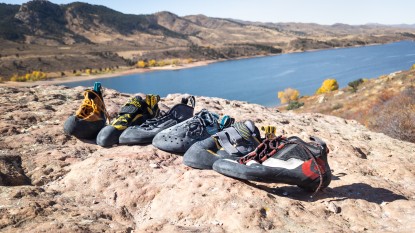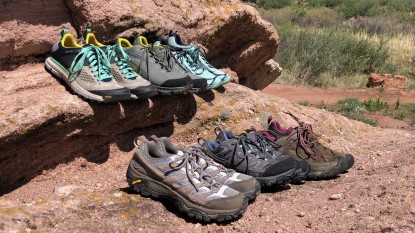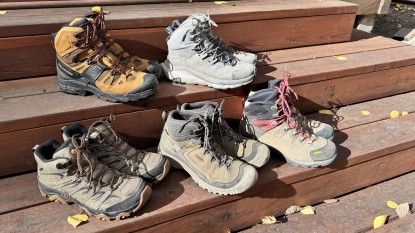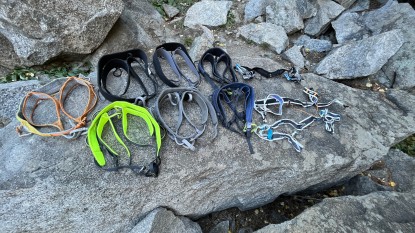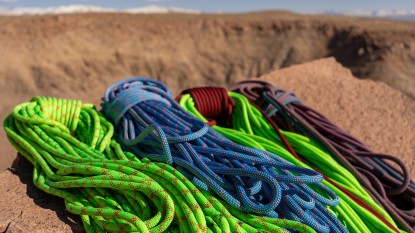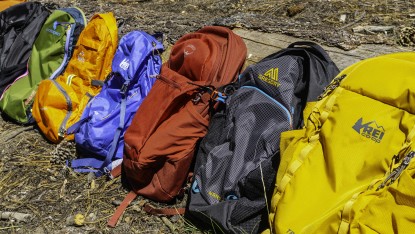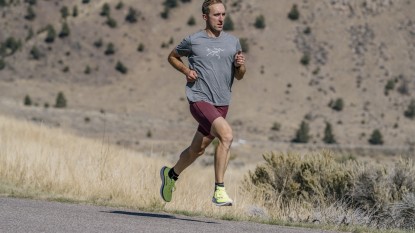Our experts want to help you understand why climbers use many types of footwear at the crags and in the mountains. In this article, we discuss the process of choosing an approach shoe over other viable options. We also tackle some questions and considerations that commonly surround this versatile type of shoe, like those related to choosing between approach shoes with soles that give excellent traction on steep dirt versus ones more focused on friction on smooth rock.
Do I Need an Approach Shoe?
Approach shoes are designed to be worn on the “approach” to a rock climb. Some climbs require little more than getting out of the car, while others require miles and miles of rugged hiking through cross-country terrain. There might be easy scrambling terrain to reach the base of the first pitch, and the descent might involve rappelling, down-climbing, scrambling, and more hiking. Approach shoes allow a climber to travel through these portions of the adventure more confidently and securely than running shoes, tennis shoes, or hiking boots. In many cases, approach shoes can be worn even while rock climbing.
A common characteristic is that approach shoes have a sticky rubber sole. These rubber formulations are softer than the ones used on most hiking and running footwear, creating more friction on smooth rock slabs. These soles usually also do a great job standing on small rock edges, mimicking the performance of true climbing shoes. Climbing approaches often have exposed, rocky terrain, and sticky rubber soles give you more confidence that your feet will stay put where you place them, especially during those times when taking a tumble is not an option.
They also have uppers that are more durable when used in rough, rocky terrain. This usually means full leather uppers reinforced by a protective toe, also made of sticky rubber. The most durable models have a rubber rand that extends entirely around the upper material of the shoe. A durable approach shoe can stand up to months of mountain-related activities such as climbing, hiking through talus and scree, and smearing up and down approach slabs that could destroy a lightweight trail runner in just a few days.
Types of Footwear to Get You To and From Climbs
Spending time at the crags or in the mountains, you notice climbers wear all kinds of footwear to get them to and from their playgrounds. Taking a look at a few of these categories of footwear will shed some light on why folks choose different footwear for the same activities. Our discussion of these classes moves from big, burly boots (the least appropriate for most climbers) down to approach shoes (the best choice for most climbers).
Mountaineering Boots
Related: The Best Mountaineering Boots
Hiking Boots
Related: 10 Best Hiking Boots
Trail Runners
Related: 10 Best Trail Running Shoes of 2025
Hiking Shoes
Related: 10 Best Hiking Shoes of 2025
Approach Shoes
Related: The Best Approach Shoes of 2025
Different Uses for Approach Shoes
The variety of terrain and distances we encounter approaching and descending from climbs places quite different demands on our footwear. Some climbing areas require short hikes and scrambles to the base of the cliff, where difficult, technical rock climbs await. Other climbing styles demand long and arduous approaches on rough backcountry terrain, with easy to moderate alpine rock climbing waiting at the end of the hike.
Short to Medium-Length Approaches and Descents
Many climbing venues are located within an easy hour of hiking and scrambling from the trailhead, car, or tram station. While hiking comfort is somewhat important on these approaches, we actually recommend placing a higher priority on climbing ability. Often, approaches require scrambling over boulders in desert washes, scrambling up 3rd and 4th class slabs, and making easy but exposed moves to reach rappel anchors during the descent. Mountain Guides and expert recreational climbers rely upon approach shoes with great climbing ability to keep them attached to the mountain when not roped up and on belay.
Easy Alpine Rock Climbs
Ten or more miles round trip, a few pitches of easy 5th-class climbing, and piles of 3rd and 4th-class scrambling? Yes, please! Our testers love moving fast over easy and moderate alpine ridgelines, and good approach shoes will allow you to leave your climbing shoes behind on these long missions where shaving ounces from your pack really matters. For these missions, we prefer shoes with lots of hiking comfort and a decent amount of climbing ability. The harder the climbing, the more we prioritize climbing ability until we reach a threshold where our climbing ability demands that we also bring climbing shoes to climb the route securely and safely. But for long alpine climbs that are well within our climbing ability, a do-it-all approach shoe with a good balance of hiking comfort and climbing ability is the best choice.
Descent Shoes
Some climbing areas have relatively short approaches, hard multi-pitch routes, and longer descents that involve steep, semi-technical terrain. In this case, most climbers are willing to sacrifice comfort and support to carry as little weight as possible when climbing. A very light, sticky approach shoe fits the bill perfectly.
Big Wall Climbing
These climbs involve long days standing in aiders while leading aid climbs and jumaring up fixed ropes, hanging out on bivy ledges, and belaying for hours. The best shoes for big wall climbing are stiff and supportive shoes that don't bend when the user is standing in aiders or slings. These shoes should also be able to climb relatively well for the occasional use while free climbing short sections. Most big wall climbers will bring actual climbing shoes if they plan on free climbing anything serious, so approach shoes for big wall climbing don't need to prioritize climbing ability.
Hiking-Oriented Approach Shoes
Many users spend most of their time hiking and scrambling on trails and over rough off-trail terrain and very little time climbing on technical rock. These users should consider approach shoes with a maximum of hiking comfort and support. Every approach shoe on the market has the ability to climb short, easy sections of technical rock, and they do so better than hiking shoes or hiking boots, often at the same level of hiking comfort. So, if you are a hiker who plans on scrambling or peak-bagging, approach shoes with the most hiking comfort are the best choice.
Technical-Climbing Approach Shoes
Approach shoes tailored towards climbing performance have soles with rubber tread patterns that are more suited to maximizing climbing ability rather than traction on the trail. Often, these soles feature large patches of flat rubber, especially near the toe, which provides excellent smearing and edging performance but little traction. They also feature relatively stiff, lightly padded midsoles, which maximize power transfer and feel between the foot and the rock, but this also makes hiking less comfortable. Mountain Guides often choose approach shoes with the best climbing ability and use these shoes on easy-to-moderate multi-pitch climbs and alpine climbs. This helps minimize the amount of time they need to spend in tight and uncomfortable climbing shoes. Hiking comfort and support are also important considerations for anyone interested in climbing technical terrain in approach shoes, but climbing ability is what keeps the shoes, and thus the climber, attached to the mountain, and therefore this metric should be the primary consideration.
Sizing
There is always a compromise when choosing the size of this type of footwear. Size them to fit nice and snug, and they will climb better. Size them to fit like a hiking shoe – with a bit of room for your toes to move around – and you'll be more comfortable while hiking, especially over long distances. If you size them so small that they are no longer comfortable to hike in, then you're left with a pair of not-so-good climbing shoes. Only you know your priorities, but we recommend sizing these shoes with a little room to make them comfortable when hiking.

